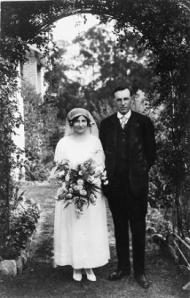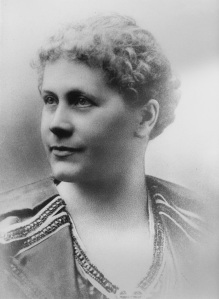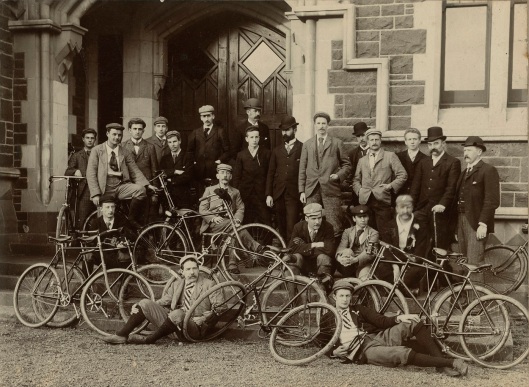This month Otago students elected Ruby Sycamore-Smith as their students’ association president for 2014. With Harlene Hayne as vice-chancellor, the two most public leadership positions in the university are now held by women. As women account for around 57% of Otago students, this seems only appropriate. It is not so very long ago, though, that such a scenario seemed unthinkable.
Otago University admitted women as students from the beginning, thanks largely to a campaign organised by Learmonth Dalrymple, who had also campaigned for a girls’ high school in Dunedin. The first woman to graduate was school teacher Caroline Freeman, capped with her BA in 1885. Like many students of this era, Freeman did not find it easy to complete her course, failing several subjects (including history and political economy on three occasions!). But she and other early women students also faced an additional barrier of gender discrimination: not every professor approved of higher education for women.
In the 1890s fewer than 20% of Otago students were female, but numbers grew slowly in the early twentieth century. During both world wars women were a more notable presence on campus as men were called away to military service – in 1918 almost half of students were female. But this was only a temporary situation and after both wars females dropped again to what seemed their ‘natural’ position of a third or fewer of Otago students. In the late 1960s persistent growth in the female proportion of students began and in 1986 women outnumbered men for the first time – a position that has persisted ever since. Unsurprisingly, the 1970s and 1980s were also a period of considerable tension on campus over feminist issues, as radicals among the growing female student body led campaigns against some of the more chauvinistic student traditions. The opening of a women’s room, banned to men, created huge controversy in 1983. It was the initiative of Phyllis Comerford, the first female president of OUSA.

Professor Rawson and Professor Benson in 1923. This marriage spelled the end of Helen Rawson’s academic career. Photograph courtesy of the Alexander Turnbull Library, Sir Charles Fleming collection, ref 1/2-129013-F.
Women staff faced their own difficulties. The School of Home Science, which opened in 1911, was a female preserve which provided a rare opportunity for senior appointments to women. Winifred Boys-Smith became Otago’s – and New Zealand’s – first woman professor when she took on the chair of home science and domestic arts in 1911. In several other departments women had teaching roles; indeed, some departments were only kept going through the war years thanks to women staff. But these women generally remained in lowly positions and were not offered the same opportunities for advancement as their male colleagues of similar abilities.
The convention that women ought not to work after marriage put a stop to many a potential academic career. An outstanding example of this is Helen Rawson, who succeeded Boys-Smith as Professor of Home Science. When she married Noel Benson, the Professor of Geology, in 1923, she resigned and, like many women of this era, threw her energies into unpaid community and voluntary work, while providing support for her husband’s career.
During the 1960s married women began to enter the university’s academic workforce, though not everybody approved. They might receive support and encouragement from their departments, but often faced criticism from the wider community, and particularly from earlier generations of women who had not had the same opportunities. Women with young children faced particular criticism and also practical difficulties due to a lack of childcare facilities – a large part of their wages could disappear as they paid for nannies or other private arrangements.
Women have come a long way since the 1960s, with equal pay legislation, improved childcare facilities, and wider opportunities for employment and promotion. In 2012, 47% of Otago’s academic and research staff (measured by full-time equivalents) and 65% of general staff were women. They remained, however, under-represented in senior positions, both academic and general. So, all power to Harlene Hayne and Ruby Sycamore-Smith as they lead the University of Otago in 2014!




